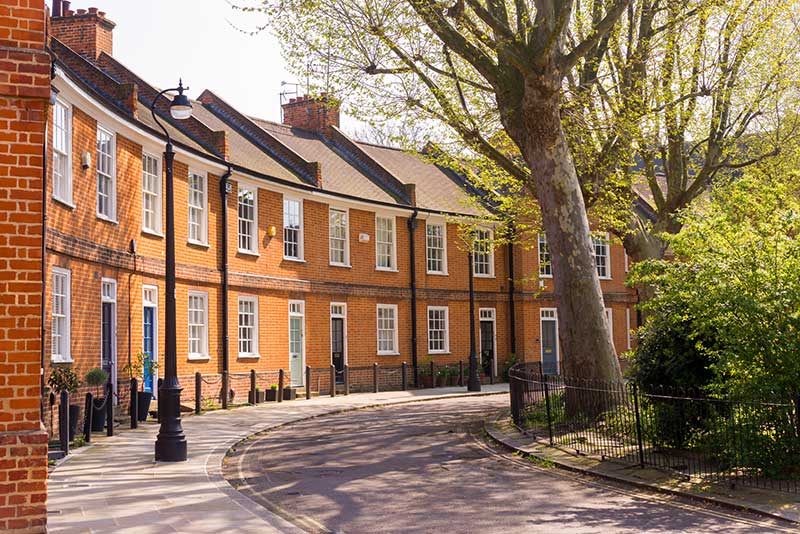29
June 2017
Nationwide Reports UK House Prices Back on the Rise
It looks like tentatively good news for the UK economy today despite general underlying uncertainty as Nationwide reports house prices to be on the rebound, while the pound has strengthened following Mark Carney’s hint at an impending rate rise.
After several months of prices either stagnating or in some cases falling, Nationwide’s latest release seems to show something of a return to form for the UK housing market, with prices rising by 1.1% in June. This monthly rise was a significant improvement from the -0.2% decrease recorded in May, and “eras[ed] the decline recorded over the previous three months,” Nationwide said.
However, while the monthly figures are positive, they are also more likely to be subject to volatility than the annual figures, Nationwide concedes. On an annual basis price growth was, at 3.1%, up from May’s 2.1%, but still reasonably modest.
“In effect,” said Robert Gardner, Nationwide chief economist, “after two sluggish months, annual price growth has returned to the 3-6% range that had been prevailing since early 2015.”
The average house price across the UK is now £211,301 by Nationwide’s estimate, up from £208,711 in May.
Nationwide provided a regional breakdown of annual price growth over the three months to June.
Interestingly, London’s annual growth over the quarter of 1.2% made it the second worst performing region in the UK and 1.6% behind the nationwide average of 2.8%. This represents a sharp drop from the 5% annual change in the previous quarter, when London was ahead of the national average and in the top five best performing regions. This is the weakest growth seen in London since 2012.
It is too early to fully explain the sharp slowdown in price growth in the Capital, but likely influences include the continued “general squeeze on household incomes” that has been stemming activity in the housing market for some time now. Equally, demand overall has been pulled back by ever reducing demand for buy-to-let properties whose profitability has been steadily reduced by various tax and tax-relief changes this and last April.
Nationwide’s latest HPI release showed generally changing regional trends, with the gap between the best and worst performing regions (East Anglia at 5% and the North at 1.1%, respectively) at the smallest it’s ever been. Though while growth rates are beginning to converge between different regions, in terms of actual prices, and particularly overall price change since 2007 peaks, the difference is still stark.
In London, for example, prices are on average around 55% higher than they were in 2007, whereas in the North, the North West, and Yorkshire and the Humber, prices are all lower than they were a decade ago. London’s average property currently costs £478,142.
With overall improvement contrasting with slowdown in regions like London, the data are hard to interpret in terms of future predictions. This is largely because it is hard to point to the causes behind both the upswing and the pullback respectively.
Gardner explains: “At this point it is unclear whether the increase in house price growth in June reflects strengthening demand conditions on the back of healthy gains in employment and continued low mortgage rates, or whether the lack of homes on the market is the more important factor.
“Given the ongoing uncertainties around the UK’s future trading arrangements, the economic outlook remains unusually uncertain, and housing market trends will depend crucially on developments in the wider economy.”
While the domestic and international political climate remains one that is somewhat at odds with economic stability, there was a glimmer of positivity coming from the Bank of England this week. The Bank’s Monetary Policy Committee recently voted again to maintain interest rates at the record low of 0.25%, but only narrowly, with a majority of just 5-3.
On Wednesday (a week after the MPC meeting), the Bank’s governor Mark Carney hinted that a rate rise might come soon, as “some removal of monetary stimulus is likely to become necessary if the trade-off facing the MPC continues to lessen and the policy decision accordingly becomes more conventional”.
With inflation at 2.9% (far beyond the 2% target), the need for stimulus that led to the rate reduction appears to be dwindling, although this all very much hinges on a variety of factors not least the outcome of the Brexit negotiations.
Carney explained: “The extent to which the trade-off moves in that direction will depend on the extent to which weaker consumption growth is offset by other components of demand including business investment, whether wages and unit labour costs begin to firm, and more generally, how the economy reacts to both tighter financial conditions and the reality of Brexit negotiations.”
Following Carney’s statements, the pound increased in value against the dollar.





